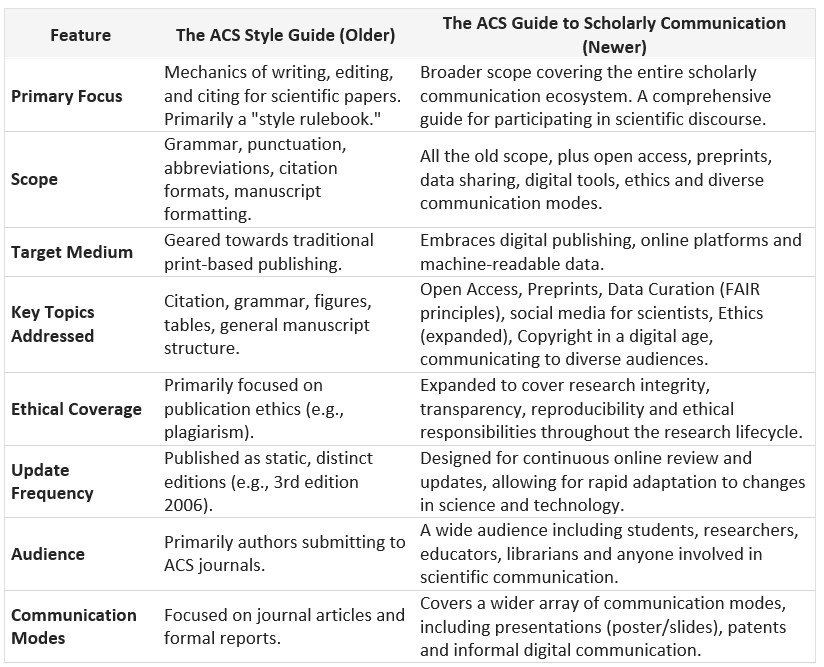Collection Spotlight: ACS Guide to Scholarly Communication

by Juan Denzer, Engineering and Computer Science Librarian
All STEM students and researchers, have you heard of The ACS Style Guide? For almost 35 years, the guide has been the gold standard for scientific writing and publishing among chemical scientists. The ACS Style Guide has changed to The ACS Guide to Scholarly Communication. The new guide incorporates everything from the Third Edition of The ACS Style Guide and much more.
The ACS Guide to Scholarly Communication is an invaluable resource of scientific communication for those in STEM, particularly for chemists and chemical engineers. The guide offers several sections that can be helpful for all STEM fields, such as Poster Presentations, Effective Slide Presentations, Ethics in Scientific Publications and more. Here's are some key points why you should use it:
- Comprehensive Guidance on Scientific Communication:
- Style Guide: It not only covers the ACS style guide, but it also covers entire scholarly communication process, from initial research design to final dissemination.
- Article Organization and Peer Review: Learn how to structure your articles effectively and understand the peer review process.
- Effective Writing: Get advice on clear, concise and impactful scientific writing, including chemical nomenclature and word usage.
- Modern Challenges: It addresses topics like Open Science, data sharing, safety communication, preprints and utilizing digital tools and social media for broader reach.
- Diverse Communication Forms: It provides guidance on various forms of scientific communication beyond journal articles, such as poster presentations, slide presentations and even patents.
2. Ensures Quality and Clarity:
- Improved Manuscript Quality: Following the guide's principles helps you produce high-quality, clear and well-organized manuscripts, increasing your chances of publication in reputable journals.
- Consistency and Professionalism: Adhering to a standardized style and ethical guidelines ensures consistency across your work and enhances your professional image.
- Avoidance of Pitfalls: It helps you navigate potential ethical pitfalls, such as plagiarism, and ensures proper attribution.
3. Up to Date:
- Continuously Updated: The ACS Guide is a dynamic, digital-first resource that is regularly updated by experts to reflect the latest trends and best practices in scholarly communication.
- Timely Topics: It covers emerging areas like citing AI/generative AI, datasets, software and social media, ensuring your references are accurate and complete.
4. Authoritative and Trusted Source:
- Backed by ACS: As the most cited publisher in chemistry, the American Chemical Society (ACS) provides unparalleled credibility and authoritative guidance.
- Expert Contributors: The guide is shaped by a multidisciplinary team of authors and editors, ensuring it meets the diverse needs of its audience.

Although The ACS Guide to Scholarly Communication is an invaluable resource for researchers in the chemical sciences, it is applicable across many scientific and technical fields. The principles of effective scholarly communication, data presentation, ethics and intellectual property are important and relevant for students and researchers in various STEM fields. Many academic institutions recommend or require the ACS style for research papers in chemistry, chemical engineering and related disciplines.
Access to The ACS Guide to Scholarly Communication is provided through Syracuse University Libraries. If you need research help with locating and publishing scientific information, particularly in the field of chemistry, please reach out to our Subject Librarians. To provide feedback or suggest a title to add to the collection, please complete the Resource Feedback Form.
